Top speed 171 km/h Length 6.35 m | Wingspan 9 m First flight March 1918 Designer Rudolph Gehringer | |
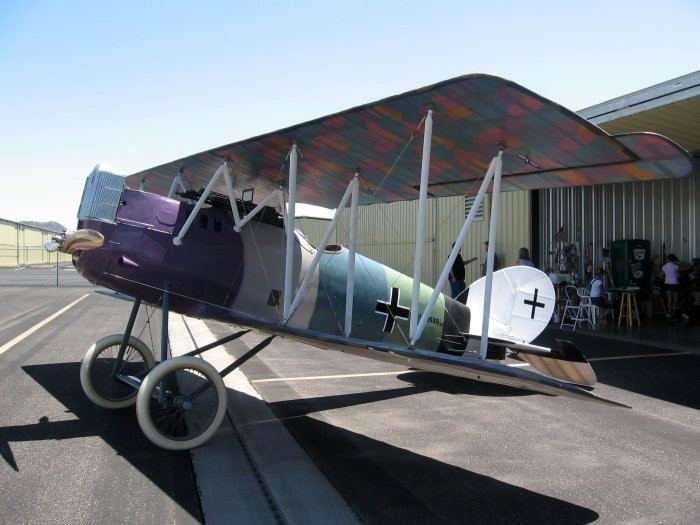 | ||
The Pfalz D.XII was a German fighter aircraft built by Pfalz Flugzeugwerke. Designed by Rudolph Gehringer as a successor to the Pfalz D.III, the D.XII entered service in significant numbers near the end of the First World War. It was the last Pfalz aircraft to see widespread service. Though the D.XII was an effective fighter aircraft, it was overshadowed by the highly successful Fokker D.VII.
Contents
- Pfalz d xii demo flight in rise of flight
- Design and development
- Operational use
- Pfalz experimental D types
- Pfalz DXIIf
- Pfalz DXIV
- Survivors
- Military operators
- Civil operators
- Specifications DXII
- References
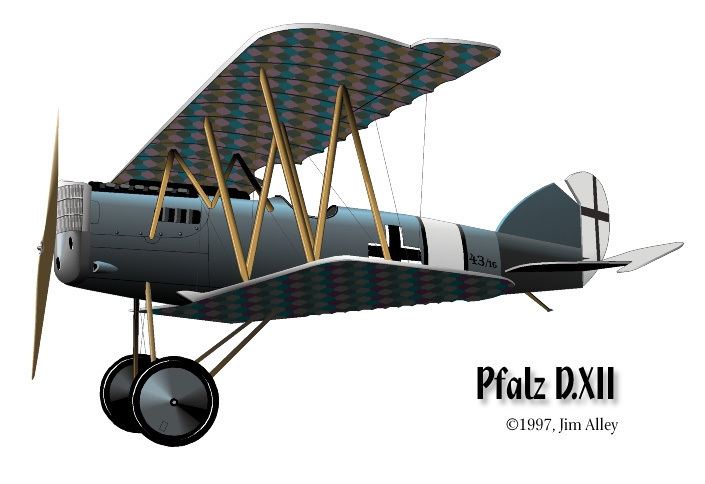
Pfalz d xii demo flight in rise of flight
Design and development
In early 1918, the Idflieg (Inspektion der Fliegertruppen) distributed to German aircraft manufacturers a detailed engineering report on the SPAD S.VII, whose wing structure Idflieg considered to be well-designed. Pfalz accordingly produced several Pfalz D.III-derived prototypes with SPAD-type wings. These developed into the Pfalz D.XII. The new aircraft was powered by the 180 hp Mercedes D.IIIaü engine and continued the use of LFG-Roland's patented Wickelrumpf plywood-skinned monocoque fuselage construction. Unlike the earlier aircraft, the D.XII used a two-bay wing cellule. Furthermore, the flush wing radiator was replaced with a car-type radiator mounted in front of the engine.
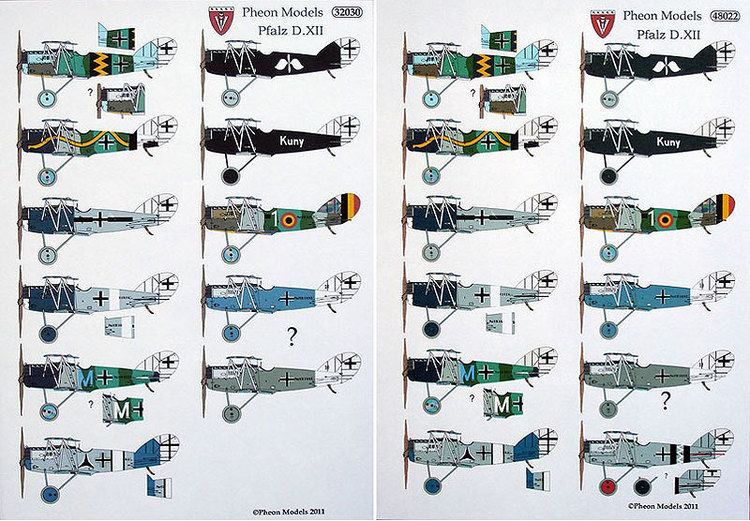
The prototype D.XII first flew in March 1918. Subsequently, Idflieg issued a production order for 50 aircraft. Pfalz entered several D.XII prototypes in the second fighter competition at Adlershof in May/June 1918. Only Ernst Udet and Hans Weiss favored the D.XII over the Fokker D.VII, but Udet's opinion carried such weight that Pfalz received substantial production orders for the D.XII. The aircraft passed its Typenprüfung (official type test) on 19 June 1918.
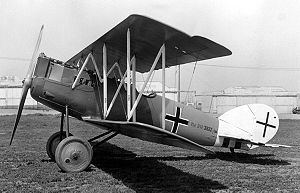
Difficulties with the radiator, which used vertical tubes rather than the more common honeycomb structure, delayed initial deliveries of the D.XII until June. The first 200 production examples could be distinguished by their rectangular fin and rudder. Subsequent aircraft featured a larger, rounded rudder profile.
Operational use
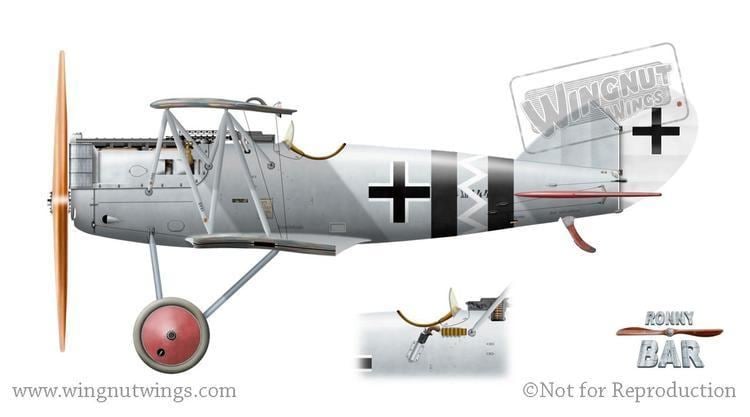
The D.XII began reaching the Jagdstaffeln, primarily Bavarian units, in July 1918. Most units operated the D.XII in conjunction with other fighter types, but units in quieter sectors of the front were completely equipped with the D.XII.
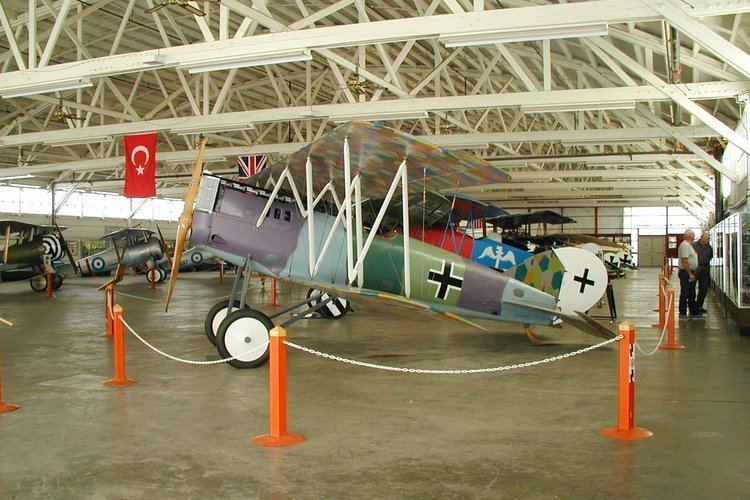
While the D.XII was a marked improvement over the obsolescent Albatros D.Va and Pfalz D.IIIa, it nevertheless found little favor with German pilots, who strongly preferred the Fokker D.VII. Leutnant Rudolf Stark, commander of Jasta 35, wrote:
Thanks to its sturdy wing and thin airfoil section, the D.XII maintained the excellent high-speed dive characteristics of the earlier Pfalz D.III. Like most contemporary fighters, however, the D.XII had an abrupt stall and a pronounced tendency to spin. Furthermore, pilots consistently criticized the D.XII for its long takeoff run, heavy controls, and "clumsy" handling qualities in the air. Rate of roll, in particular, appears to have been deficient. Landings were difficult because the D.XII tended to float above the ground and the landing gear was weak. Ground crews disliked the extensive wire bracing of the two-bay wings, which required more maintenance than the Fokker D.VII's semi-cantilever wings. Evaluations of captured aircraft by Allied pilots were similarly unfavorable.
Between 750 and 800 D.XII scouts were completed by the Armistice. A substantial number, perhaps as many as 175, were surrendered to the Allies. Of these, a few were shipped to the United States and Canada for evaluation.
Pfalz experimental D types
During the development of the D.XII, Pfalz produced several Pfalz D.III-derived prototypes with SPAD-type wings and Windhoff "ear" radiators.
Pfalz D.XIIf
The overcompressed BMW IIIa engine would have provided improved performance in the D.XIIf variant. Records show that Pfalz received 84 such engines between July and October 1918, but there is no photographic evidence of any production D.XII equipped with the BMW IIIa. In his autobiography, Anthony Fokker claimed that pilots deliberately wrecked D.XIIf aircraft so the engines could be salvaged and installed on Fokker D.VIIs.
Pfalz D.XIV
The Pfalz D.XIV was a derivative of the D.XII, utilizing the same fuselage and basic wing structure. The D.XIV differed primarily by replacing the 180 hp Mercedes D.IIIaü with the 200 hp Benz Bz.IVü, a substantially heavier engine. To cope with the increased power and weight, the D.XIV featured longer span wings and an enlarged vertical stabilizer. Enlarged ailerons were used to maintain rate of roll. A few prototypes were tested at the second Adlershof competition and a small production order ensued. Production was quickly terminated, however, and the D.XIV did not see active service. The D.XIV did not offer an appreciable increase in performance over the D.XII, and the Benz Bz.IVü engine was needed for reconnaissance aircraft.
Survivors
Military operators
Civil operators
Specifications (D.XII)
Data from German Aircraft of the First World War
General characteristics
Performance
